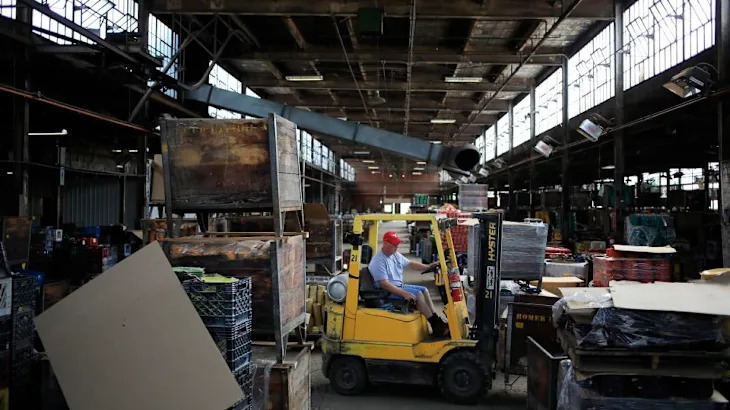
US wholesale prices fell last month, new data showed Friday, an indication that inflationary pressures weren’t necessarily building before they reach the consumer.
The better-than-expected Producer Price Index reading — which showed that the prices paid to producers fell 0.4% in March from the month before and slowed sharply to an annual rate of 2.7%, from 3.2% — provides a snapshot before President Donald Trump’s aggressive trade policies fully kick in.
However, the sharp drop in the overall index was partly attributable to broader concerns that the global economy will slow because of that drastic shift in US trading policy.
Energy prices dragged down the overall PPI, Thursday’s data showed, as they did in CPI. The energy for final demand index sank 4% for the month, the Bureau of Labor Statistics reported Friday.
Energy prices typically move higher this time of year; however, they moved lower last month because of a supply-demand imbalance as well as recession concerns weighing on crude oil prices.
Still, Friday’s report did provide some welcome indications on the inflation front: First, wholesale food prices dropped 2.1%; plus, underlying inflation continued to slow. Excluding food and energy, categories that tend to be highly volatile, core PPI fell 0.1% from February (when it rose 0.1%), bringing the annual increase to 3.3%, its lowest rate since September.
Economists were expecting monthly prices to rise by 0.2% and to accelerate to 3.3% on an annual basis.
PPI, which measures the average change in prices received by producers of goods and services, serves as a potential bellwether for retail-level inflation in the months ahead. This index also is being scrutinized to glean insight as to the initial impacts of Trump’s sweeping new and proposed tariffs .
March marked the second month that tariffs on Chinese goods were in effect (rising from 10% on all imports to 20% in early March); the global 25% tariffs on steel and aluminum imports went into effect on March 12.
In April, Trump upped the ante on his tariff regime, including imposing an across-the-board 10% tariff on imports and a massive 145% duty on Chinese imports.
Economists have warned that the sharp escalation in America’s effective tariff rate will result in higher prices for businesses and consumers as well as disrupt the global economy, possibly triggering a recession.
Friday’s PPI gave some hints as to how tariff-related price pressures could be percolating.
Wholesale iron and steel mill prices jumped 7.1% in March, logging the biggest monthly jump since April 2021, when supply chains were on the fritz amid the sharp pandemic recovery.
On Thursday, the latest Consumer Price Index data showed that overall inflation cooled for the goods and services Americans commonly purchase. But tariffs and a quickly escalating trade war with China are expected to result in some price increases for consumers.
This story is developing and will be updated.
For more CNN news and newsletters create an account at CNN.com


